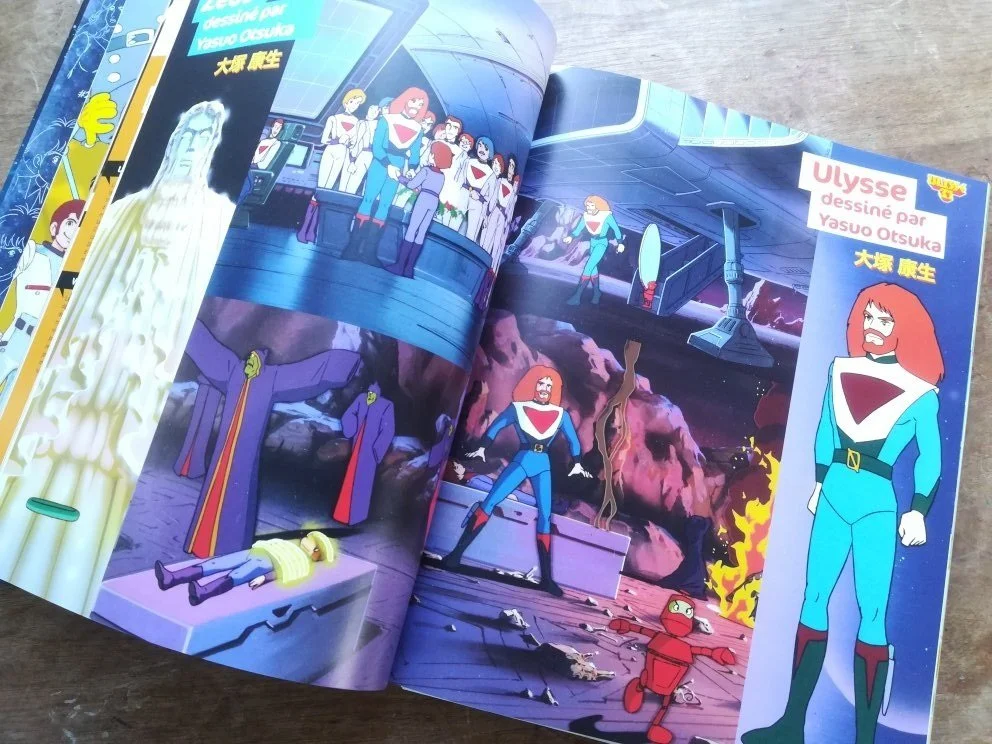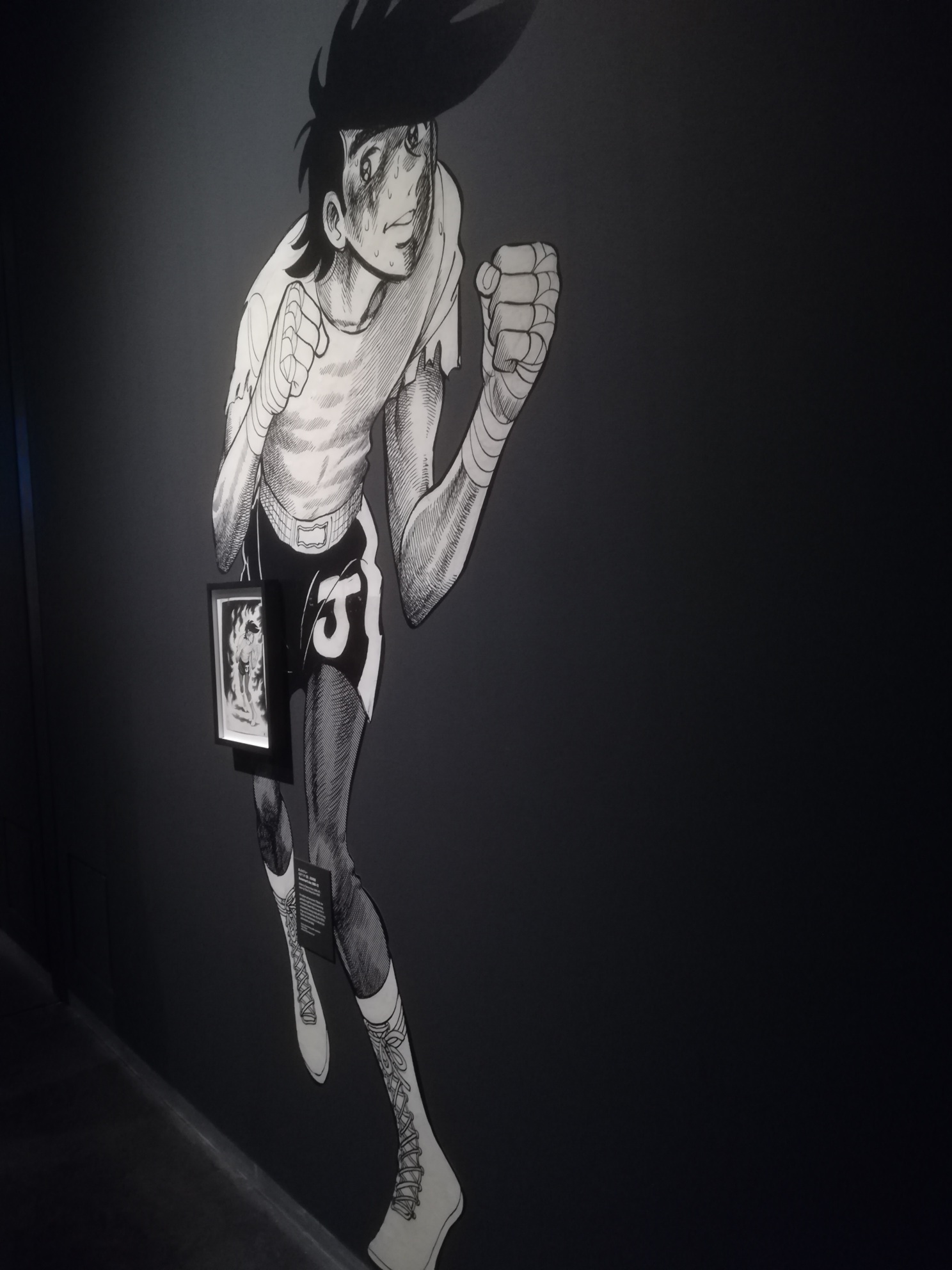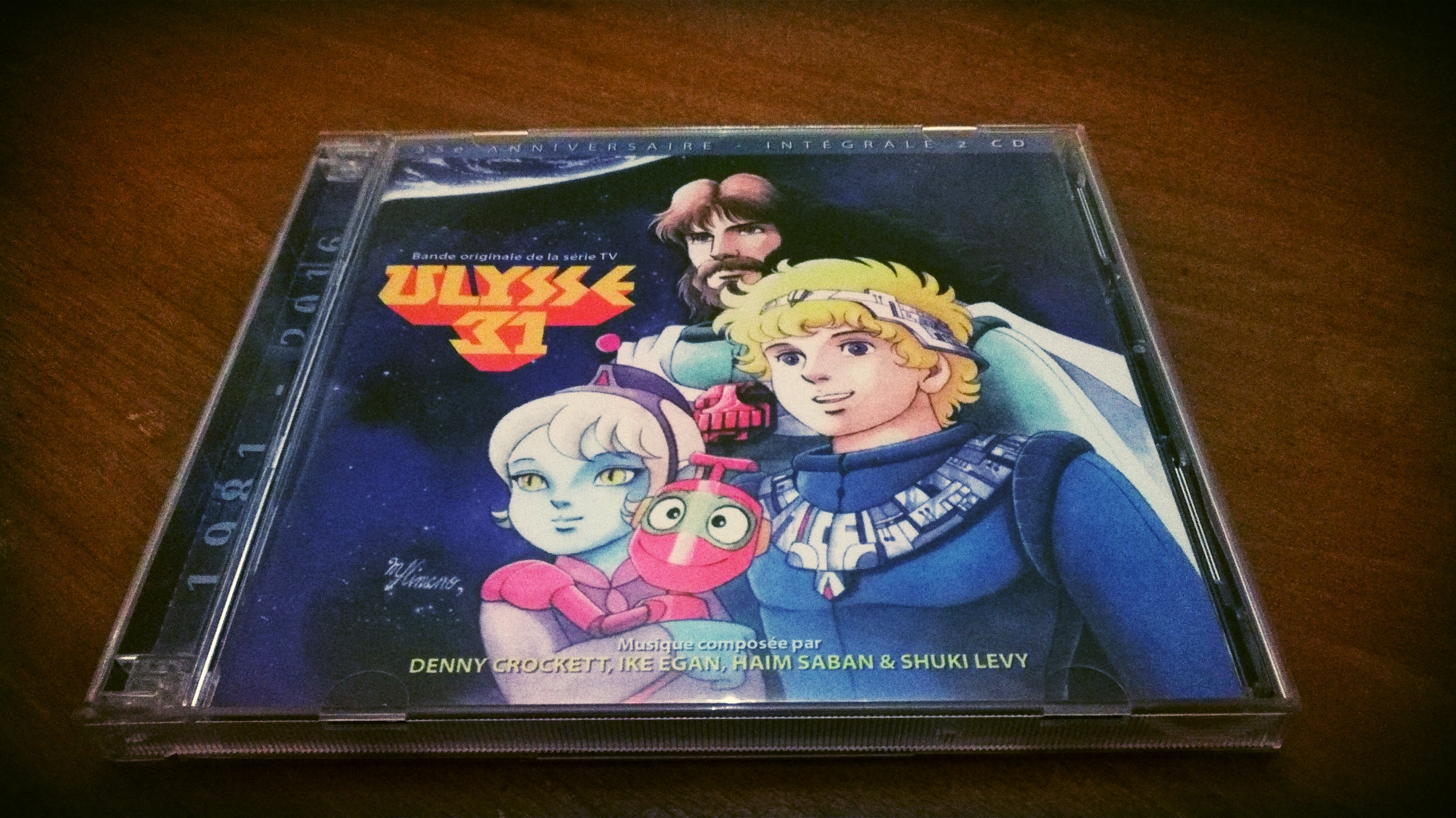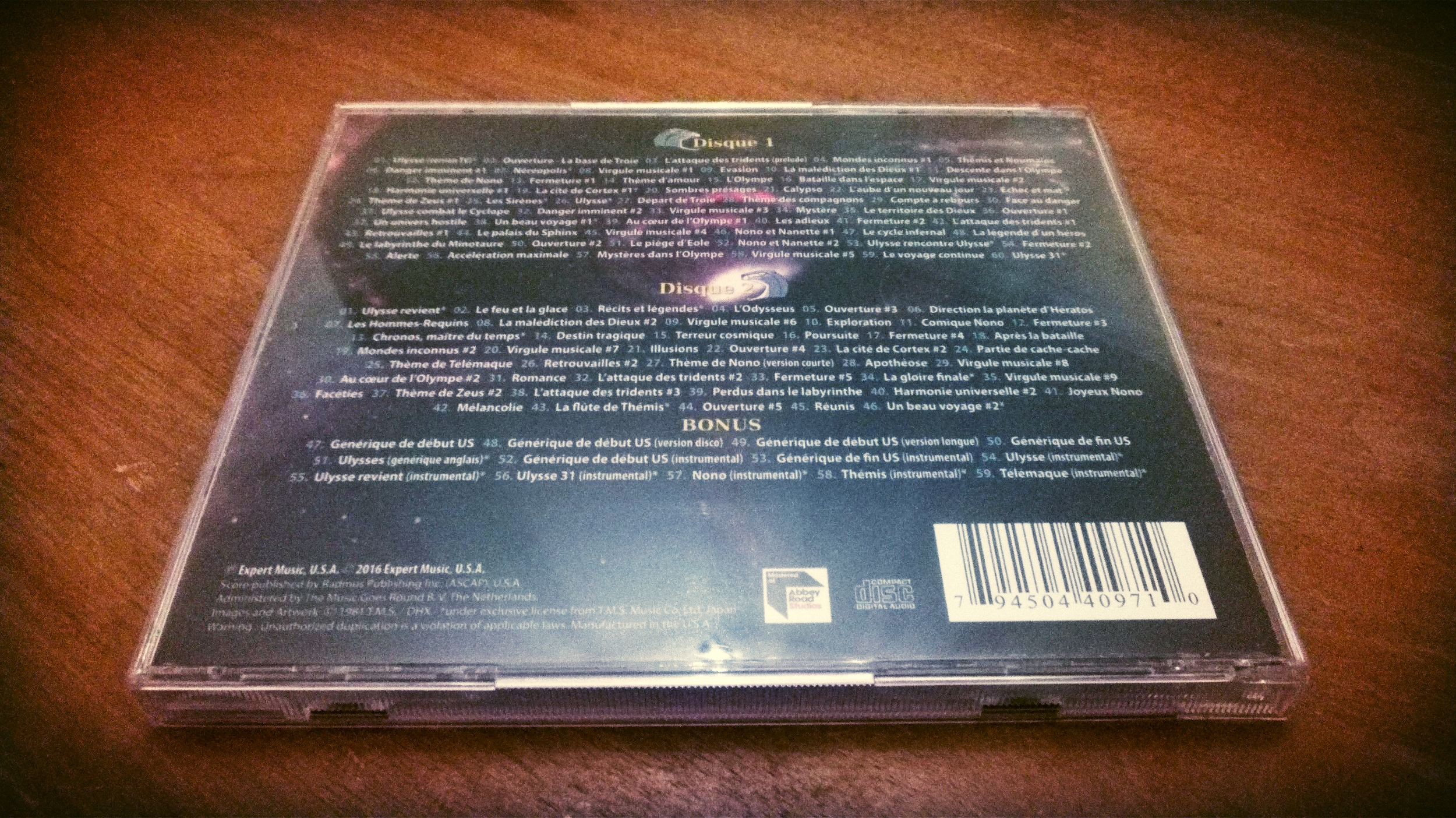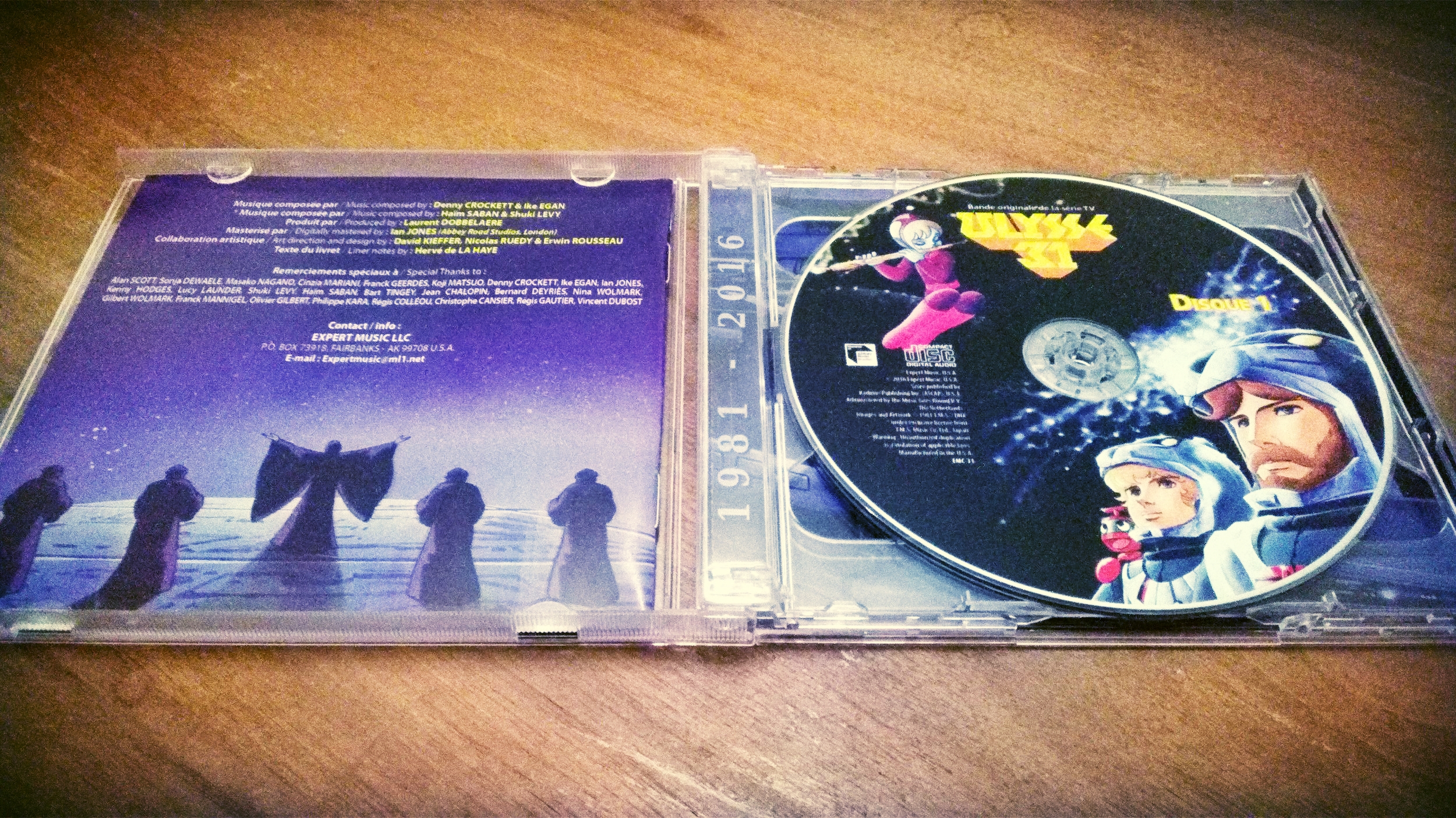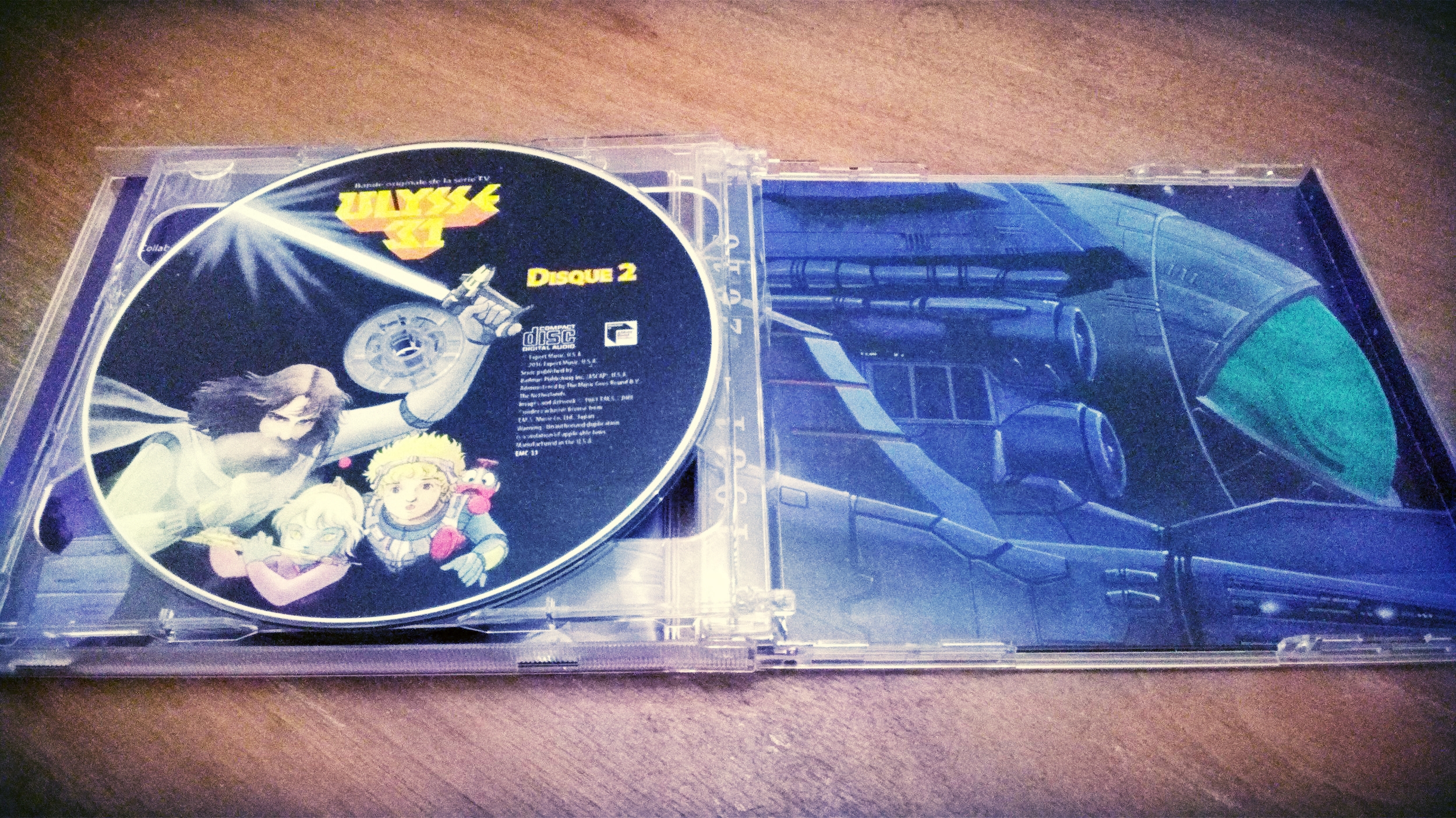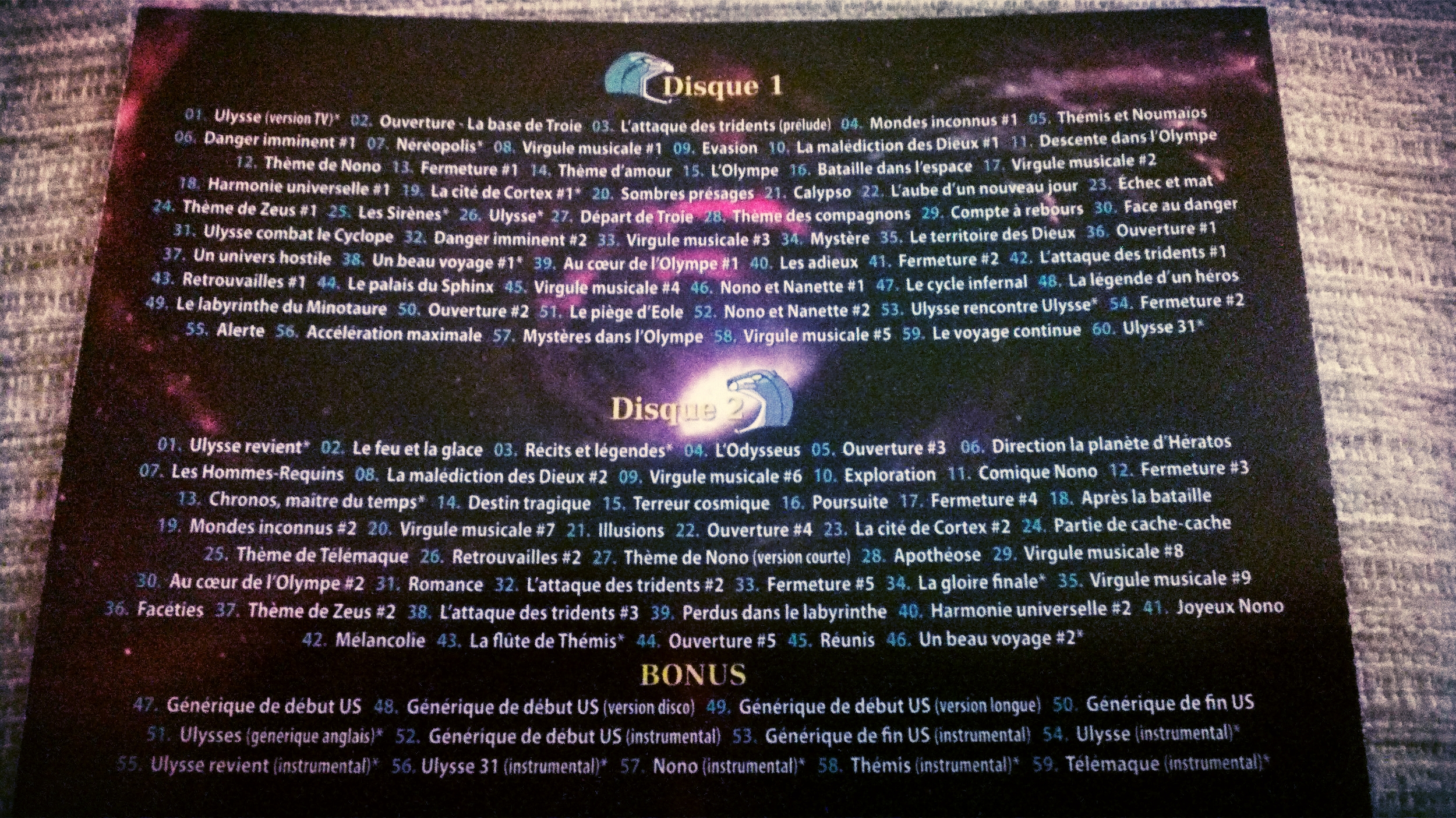I have a huge amount of affection for the animation of the 80s, some of my most formative years in terms of developing my interests. I was (and still am) a huge Mysterious Cities of Gold fan, which I found out was a specific style of animation called anime, and that became a huge part of my life for the following 20 or so years. For me the series had it all; relatable characters, amazing adventures and a thrilling story line. I found out much later that the series was only 39 episodes long but back then it seemed to stretch on forever, like Dogtanian and Willie Fogg; all large sequential series that showed on BBC 1 and ITV weekly and then in large chunks in the morning during those looong summers. Other series I loved were Ulysses 31, Jayce and the Wheeled Warriors and Heathcliffe- all series produced by DIC. The name sticks because, well, it's DIC and in England it means something very different from Diffusion, Information and Communication.
Over the years, I've collected all these series on DVD and Bluray boxsets and have reviewed them right here on this website (links to all below). So when I heard that there was going to be a crowd funded hardbacked book on the history of DIC called The Series of Our Childhood I knew I had to get in on that. The book, which is written in French, by Maroin Elausti and Nordine Zemrak, is beautifully produced with good quality paper stock, excellent print quality and clear images, many of which I have never seen before. Now, my French is very GCSE from nearly 30 years ago so it is poor but I used Google Translate and read the entire book this way. It's not the most convenient way for sure but it worked well enough.
The book is pretty comprehensive as It looks at how DIC started out making short commercials for private companies and the French government before moving onto short form animation then moving on to longer animated series.
Ulysses 31
The first big ticket animation for them was Ulysses 31. I first came across the show when it was first shown in the mid 80s on the BBC but I saw it in my formative years again in the early 90s on Channel 4, where it was shown daily at 6:30, just before the Big Breakfast. I remember thinking how cool and ahead of it's time the animation was but the moody, evocative and exciting synthesizer soundtrack complemented the show well... heightening the sometimes very dark cartoon well. I had fond memories of the series as a child and rewatched it in my youth, collecting the DVD boxset when there was an 80s nostalgia fueled goldrush in the early 00s. Since then I've collected the soundtracks but have never really known much about the creative process behind the series; it's for partially for this reason that I purchased this book.
Creator, Jean Chalopin, decided to tap into the zietgiest created by Star Trek and Star Wars and wondered what the world would be like in the 31st century; would racism, classism or poverty still exist? By placing Ulysses, a hero known for his cunning and metis (the application of skills and knowledge in different situations) in to this futuristic world he could explore the cosmos and the different scenarios within.
Chalopin explains, "Our reasoning was as follows: during Antiquity, the Mediterranean Sea remained immense and partially unexplored for the Greeks. It was as mysterious as the Universe to us today. Means of transport were as limited as those we have today to explore the Universe. So, if we project the Odyssey into a Star Wars type universe, we obtain Ulysses transposed to the 31st century, lost in space... During Antiquity, the Greek hero was an extraordinary being, thanks to his exploits which elevated him to the rank of demi-God.'"
The idea that the ancient Mediterranean Sea was a wild and unexplored place, much like space, and thus created a wide canvas for Ulysses to adventure in is the insight I was looking for.
Additionally, learning that the cryosleep curse of the companions by Zeus in episode one was a choice made out of financial constraints makes sense. By having fewer characters to animate, it created the appropriate tone and focussed in the central conceit of saving his companions.
Later we learn that the co-production between DIC and TMS, Japan was due to the stronger animation house infrastructure in place there that would allow the animation to be of a stronger standard and keep the costs significantly lower. TMS also wanted to build its reputation abroad as it often was outsourced for animation but had never co-produced a series. Rene Borg, who designed the original characters, didn't want to compromise his vision so refused to collaborate with his Japanese counterpart and so was replaced by Bernard Deyries who created the animation style we all know and love alongside Shingo Araki (designer of Saint Seiya and Goldorak). Sci-fi writer Philippe Adamov and François Allot were the world builders and created the machines and environments for the series. When fellow Chief Director Nagahama died, Bernard Deyries became the sole Chief Director.
We learn that the series had some teething issues, usually related to differences between the French and Japanese cultures. Ulysses is a key figure in the West and is proto-Heroes journey what in Japan he is an unknown figure. The push and pull between fights and wiles caused tension as the French wanted to show him being clever and philosophical whilst the Japanese wanted more action, battles and robots. It's more complex that thia sounds but these were the general divergence between the two studios. Shoji Kawamori, creator of the mechs and ships used in Macross, helped design the spaceships and fighters in Ulysses 31. Nono, was not his design but Borg's, however the design was tweaked to make it more childlike and cute.
The show was composed of between 9000 to 12000 cels as well as several computer techniques to add depth and layers like space and star fields. The show was a huge success in France but less so in Japan. The Odyssey book by Homer became a huge seller that year in France and revived an interest in the Classics amongst the French students.
Jean Chalopin met composers Ike Egan and Denny Crockett through the Osmond family over dinner. Over two weeks, he worked with them to create over 100 tracks and selected ones he wanted to use for the show. Haim Saban and Shuki Levy were asked to create the now iconic opening credit music.
DIC worked with Bandai to develop a toy range and the products were best sellers.
The series has a lasting legacy in the West and is affectionately remembered.
The Mysterious Cities of Gold
MCOG was first shown on the Antenna 2 channel in France on 28th September 1983 but the show started off following the success of Ulysses 31, Marco Polo and Belle and Sabastian. NHK wanted a story based on the conquest of the Americas but it wanted a literary foundation and to be able to create informative documentaries after the show. Mitsuru Kaneko (MK Production) found Scott O'Dell's The King's Fifth by chance and met him to secure licencing rights. They agreed that the story could be changed to make it more appealing to younger audiences.
NHK approached DIC and Jean Chalopin to collaborate with as they had a lot of credit with the release of Ulysses 31. Even though it was not a smash hit, it sent shock waves across Japan on how productions could be collaborative.
The first several months of production were spent on creating the Bible for the series. The series had been a more straightforward adventure story under the Japanese team but the mystical elements, such as the Hiva/ Mu civilisations, the Jade Mask, the solar power design of the Solaris and Golden Condor were placed in on insistence from the French team.
Mitsuki Nakamura was the lead background animator and produced the detailed backdrops that made the world come alive. There were sometimes more than 250 different backgrounds used in a single episode.
Studio Pierrot did the animation and was headed by Yuji Nunokawa, a Tatsunoko alumnus, and Mitsuru Kaneko, a journeyman who had worked for Toho, MGM and the MK Company.
Hisayuki Toriumi, the Art Supervisor, said that when she was developing the characters she wanted to create a group with no leader. Mendoza is the most complex and compelling as the audience don't know who's side he is on throughout. She wanted to keep audiences guessing until the end with Mendoza's moral ambiguity.
Toshiyasu Okada was the Lead Character Artist and worked with DIC to create an agreeable ensemble of characters. The character designs were altered to appeal to more Western sensibilities and animation styles so the eyes became rounder and the chins less pointy. They didn't want an issue selling to certain markets like they'd faces with Ulysses 31 and NHK agreed. Okada also worked alongside DIC to make the 'evil' characters look less evil, a sensibility that arose in manga where it is obvious who the bad guys are. This nuance was tricky but he understood how, 'A monks clothes do not make him a monk.'
A major sticking point between the French and Japanese was the soundtrack, they could not agree and so each did their own version. Deyries thought the soundtrack needed to breathe and add an air of wonder and mystery. He listened to Jeff Wayne's War of the Worlds soundtrack and wanted that sense of drama and gravitas. He hired Haim Saban and Shuki Levy to produce tracks and, out of 60 to 70 pieces, chose 50 that would be used on the show.
Inspector Gadget
There follows an extensive Inspector Gadget piece which looks at the creation, based on an idea by Andy Heyward, who had previously worked at Hannah Barbara. Using Heyward's experience of the American animation marketplace, an area in turbulent times in the late 80 and early 90s, DIC were able to create the idea of the bumbling Inspector Gadget in pretty quick time.
The pilot was given a healthy budget and animated by TMS but the rest of the 65 series episodes were created by Nelvana, the Canadian animation company who had worked on the 10 minute Star Wars Holiday Special animation, TMS and a Korean company. It was up to the Japanese team to ensure consistency across all teams.
The series aired on 24th October 1983 and was a great success.
The second season of 21 episodes was not as successful as the budget was cut, Penny's role diminished and the Gadget jokes becoming more hack.
Jayce and the Wheeled Warriors
The next big piece for me was the Jayce and the Wheeled Warriors section which didn't reveal much new except that the toys were designed first and the cartoon after. Additionally, J. Michael Straczynski wrote on the show and even wrote a downbeat finale which was never produced as the toys didnt sell enough to warrant a 64 episode syndication run.
Overall, this book is essential for DIC fans as it gives a pretty good overview of their genesis to closure. I'm pleased with the book as it goes pretty deep into Ulysses 31 and MCOG and those were what I wanted to investigate. There are plenty of other series, all of which I read through too, but I’m glad that the series that were formative for me were covered in so much detail. Any classic animation fan should definitely get this book!
LINK- Ulysses 31 Retro Soundtrack Review
LINK- Mysterious Cities of Gold Season 3 (English Dub) - Complete Series Review
LINK- Japan: My Journey to the East
LINK- Akira Soundtrack Vinyl Review
LINK- Manga Exhibition at the British Museum
LINK- The Golden Voyage of Sinbad- Cult Movie Review
LINK- The Transportive Nature of Objects (And the Power of Mini Consoles)

